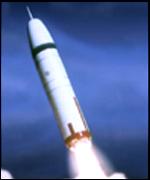



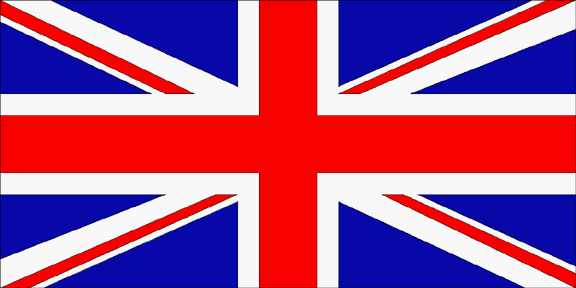



Last changed 30 April 2001
A comprehensive Strategic Defense Review was completed by the Labor government in March 1998 that resulted in a major revision in Britain's strategic nuclear posture in July. Effective immediately all WE177 bombs were removed from service, and all of them (175 WE 177 A and B bombs - with yields of 200 and 400 kt) were dismantled by the end of August. This left only a single nuclear weapon system in service - the Trident submarine.
 |
| Trident Missile |
The first batch of British Trident warheads were completed in September 1992. They were designed by the Atomic Weapons Establishment (AWE) at Aldermaston, and are assembled at Aldermaston and Burghfield. The warheads are though to have similar characteristics to the U.S. W-76 now on U.S. Trident I and II missiles. The British Trident warheads are capable of selective yield, ranging from under a kiloton up to the full yield of 100 kt or so (this appears to differ from U.S. SLBM warheads). Yields are probably 0.3 kt, 5-10 kt and 100 kt.
In keeping with the reduced operational tempo, only a single crew for each submarine will be maintained. Furthermore the missiles are kept in a de-targeted state. The SDR further declares that "the submarines will routinely be at a 'notice to fire' measured in days rather than the few minutes quick reaction alert that we sustained throughout the Cold War."
The SDR points out that the implied maximum arsenal of 192 warheads "is a reduction of a third from the maximum of 300 announced by the previous government and represents a reduction of more than 70% in the potential explosive power of the deterrent since the end of the Cold War". It is quite possible that the actual warhead stockpile is somewhat smaller than the maximum figure of 192. Only 174 warheads are required to fully equip the entire missile inventory at the specified force loading, but some additional ones would be kept as spares putting the number near 192. However previous practice with the Polaris fleet was to produce only enough warheads for three boats, with more for spares. This would make the stockpile 144 plus 10-15 percent extras, or 160-165.
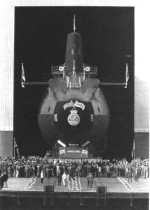 267x3733, 16 K |
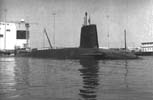 500x376, 24 K |
| HMS Vanguard | HMS Vanguard |
 |
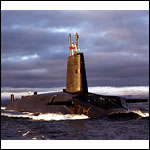 |
| HMS Victorious | HMS HMS Vengeance |
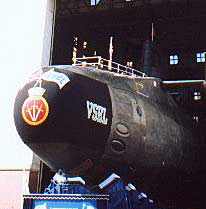 |
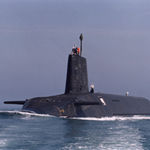 |
| HMS Victorious | HMS HMS Vengeance |
The 58 missile bodies being procured are fewer than the 64 required to completely equip all four boats, so rotating missiles between submarines will be required. But since only one Trident submarine will be kept on patrol, it will be easy to have one submarine out of service - undergoing refitting and maintenance - at any given time, requiring only 48 missiles for the three active boats. This is similar to the practice the UK followed with its previous submarine fleet, the Resolution class Polaris missile subs. The UK produced only enough warheads for three of the four boats, so that warheads were rotated from boats in port to ones that were setting out on patrol. Typically two Trident submarines may actually be at sea at any given time, one going or coming back from patrol while the other is on duty. In a crisis three boats could be put to sea fairly quickly with up 144 warheads (120 or so is a more likely figure).
The Trident II missiles are not actually owned outright by the UK. Instead the Trident II missiles belong to a pool of missiles managed by the United States and stored at Kings Bay, Georgia. British boats pick up their load of missiles at Kings bay when they are commissioned and exchange them there when missiles need servicing. The Trident warheads are mated to the missiles on-board the submarine at the Royal naval Armament Depot at Coulport.
Although the average number of warheads per missile will be 48, the actual distribution of warheads on missiles is uncertain. Beginning in 1996 the UK adopted the strategy of "sub-strategic deterrence". This is basically the same idea as the U.S. policy of "flexible response". It entails having a range of nuclear options, especially limited ones. Some Trident missiles are thus downloaded to a single warhead so that it is possible to launch a strike without using multiple warheads, others will thus have a higher loading. The Trident warheads also offer multiple yields - probably 0.3 kt, 5-10 kt and 100 kt - by choosing to fire the unboosted primary, the boosted primary, or the entire "physics package". According to the 1996 Defence White Paper this policy became fully operational when the Vigilant entered service.
With the entry into service of this last SSBN, barring changes in policy with this or future Administrations, the UK nuclear deterrent has entered a state of stability with no planned changess that may last for decades.
The management of the Atomic Weapons Establishment (AWE) was put up for bid in 1998, and on 1 April 2000 an industrial consortium consisting of British Nuclear Fuels (BNF), Lockheed-Martin, and Serco Limited, took over under a 10 year contract worth 2.2 billiion pounds. The RAF is relinquishing its responsibility for security and control over the nuclear stockpile, to the Ministry of Defence Police (with support from the Royal Marines) and Chief of Defence Logistics. The transfer will be completed 31 March 2002.
British Strategic Forces: March 2001 |
|||||
|---|---|---|---|---|---|
Weapon Designations |
Launcher Number |
Warhead Loading |
Warhead Number |
Total Yield |
Total Yield |
SLBMs/Submarines |
|||||
| Trident II D-5 | 58 | 1-6 x 0.100 | 192 | 19.2 | 41.4 |
| Vanguard Class Submarine | 4 | 16 x Trident II D-5 | |||
Grand Total |
58 | 192 | 19.2 | 41.4 | |
Notes | |||||
Weapons Material Inventory
In addition to the militarized nuclear reactors mentioned above, prior to 1969 spent fuel was diverted from other civilian nuclear reactors as well. Attempting to estimate British weapons plutonium production from these many sources is quite difficult. The best estimates have been made by Albright, Berkhout, and Walker in Plutonium and Highly Enriched Uranium 1996, SIPRI Press. Their net estimate is that Britain produced 3.6 tonnes of weapon grade plutonium in reactors (using fuel burnups of 400-800 megawatt-days/tonne) +/- 0.5 tonnes. About 0.5 tonnes has been effectively lost through reprocessing waste, expenditures in tests, and transfers to the United States. Another 8.7 tonnes of fuel or reactor grade plutonium is also in military inventory.
A British nuclear industry report on plutonium holdings for 1995 showed that British Nuclear Fuels PLC held a total 85 tonnes tonnes of civilian plutonium. 54 tonnes are owned by UK utilities and 31 tonnes owned by BNFL or its overseas customers. Of this 85 tonnes, 39.5 tonnes remains in spent fuel. Only 66 kg was listed as being in MOX fuel exported, none in MOX stock. All separated plutonium had more than 15% Pu-240. The military plutonium stockpile was given as 4.5 tonnes held in various forms by the UK Atomic Energy Authority.
The majority of Britain's HEU supply was purchased from the United States. Prior to 1970 6700 kg of HEU was imported. An estimated 4000 kg has been acquired from the U.S. since that time. The total amount of HEU acquired by the UK since the start of its nuclear program is estimated by SIPRI at 15.1 tonnes, of which 5.8 tonnes have been used in submarine reactors, 1.0 tonnes used in nuclear tests, and 0.5 tonnes lost in processing wastes. This leaves 7.8 tonnes available for weapons use (+/- 25%)
As part of the SDR, the UK released its first official figures about its holdings of fissile weapons material. These figures can be compared with the estimates given above. Current defence stocks are 7.6 tonnes of plutonium, 21.9 tonnes of highly enriched uranium (both substantially higher than the estimates above) and 15,000 tonnes of other forms of uranium. With the reduction in planned warhead numbers, the UK plans to place a surplus of 0.3 tonnes of weapons grade plutonium under international safeguards (along with surplus non-weapons grade material).
The UK also declared that:
"We will also cease exercising our right as a nuclear weapon state under the Nuclear Non-Proliferation Treaty to withdraw fissile material from safeguarded stocks for nuclear weapons. Future withdrawals will be limited to small quantities of materials not suitable for weapons purposes and the details will be made public. No material withdrawn from safeguards will be used in nuclear weapons. All planned future reprocessing will also be carried out under safeguards and we intend to publish an initial report by 2000 on past defence fissile material production."





